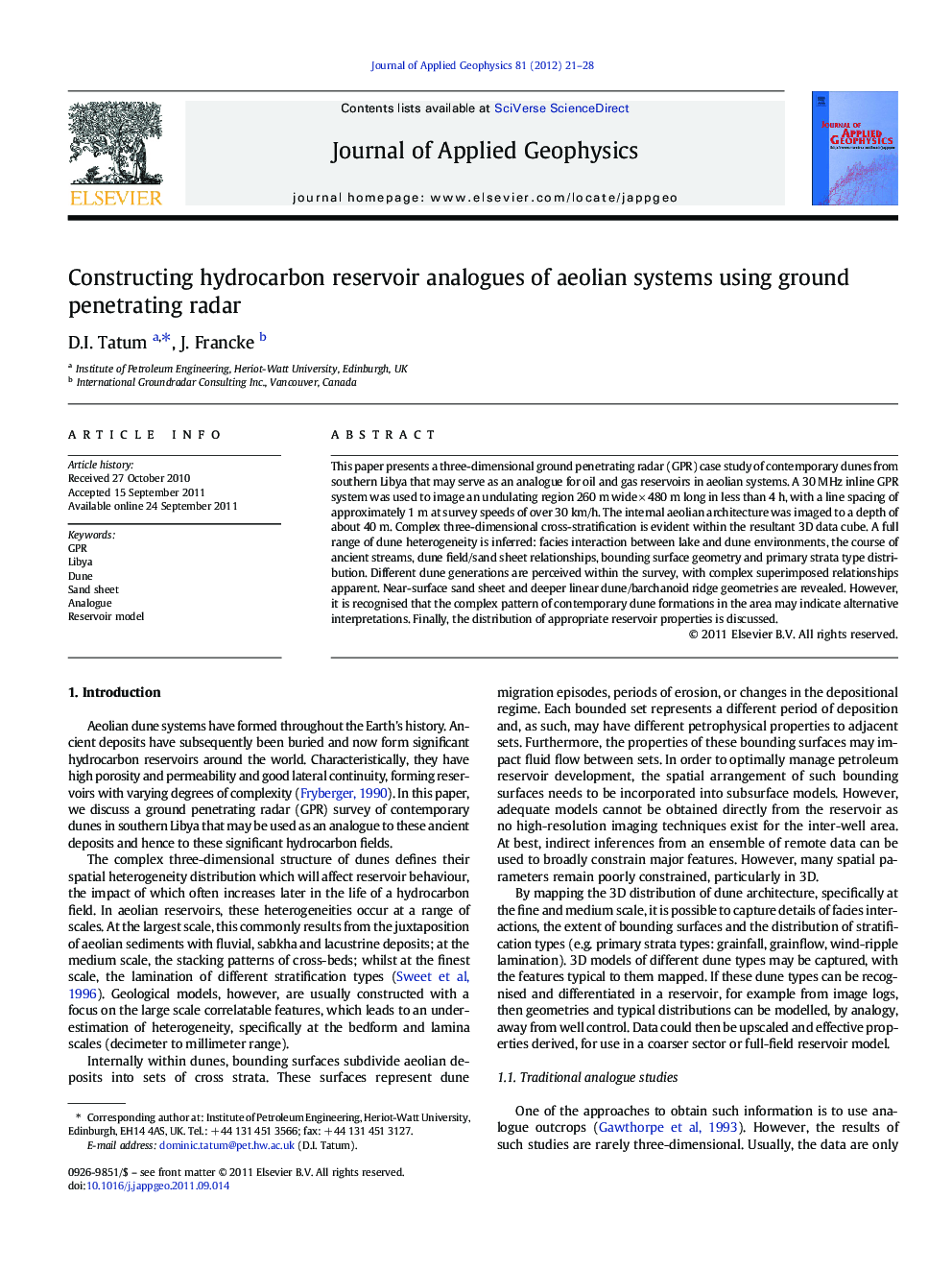| Article ID | Journal | Published Year | Pages | File Type |
|---|---|---|---|---|
| 4740425 | Journal of Applied Geophysics | 2012 | 8 Pages |
This paper presents a three-dimensional ground penetrating radar (GPR) case study of contemporary dunes from southern Libya that may serve as an analogue for oil and gas reservoirs in aeolian systems. A 30 MHz inline GPR system was used to image an undulating region 260 m wide × 480 m long in less than 4 h, with a line spacing of approximately 1 m at survey speeds of over 30 km/h. The internal aeolian architecture was imaged to a depth of about 40 m. Complex three-dimensional cross-stratification is evident within the resultant 3D data cube. A full range of dune heterogeneity is inferred: facies interaction between lake and dune environments, the course of ancient streams, dune field/sand sheet relationships, bounding surface geometry and primary strata type distribution. Different dune generations are perceived within the survey, with complex superimposed relationships apparent. Near-surface sand sheet and deeper linear dune/barchanoid ridge geometries are revealed. However, it is recognised that the complex pattern of contemporary dune formations in the area may indicate alternative interpretations. Finally, the distribution of appropriate reservoir properties is discussed.
► Custom GPR systems can rapidly capture detailed 3D aeolian architecture. ► Depths of 40 m (or more) can be acquired in areas with favourable electrical properties. ► Distinct sedimentary packages can be interpreted from imaged 3D volumes. ► Petrophysical properties may be accurately distributed throughout resultant models.
